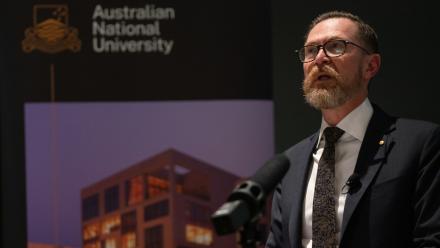Australia last in global gender pay gap reporting scorecard
Australia has ranked equal last in a scorecard on gender pay gap reporting across six countries, according to a new major international report.
Bridging the gap is published by the Global Institute for Women's Leadership (GIWL) at King's College London, with researchers from The Australian National University (ANU) leading the Australian case study.
It ranked gender pay gap reporting systems across 11 indicators in Australia, France, South Africa, Spain, Sweden and the United Kingdom.
Australia scored four out of 11, ranking equal last with the UK. Spain was the top-ranked nation, scoring eight-and-half out of 11. France came in second with a score of eight, South Africa third with a score of five-and-a-half and Sweden fourth with a score of five.
A key issue identified in the report was a lack of meaningful change, despite Australia being an early world leader in legislating for gender equality.
"After nearly four decades of gender equality reporting in Australia, many organisations have gender equality policies in place, but evidence suggests that many policies are ineffective," the report reads.
"The Workplace Gender Equality Act 2012 is essential for equipping advocates and activists with evidence of gender inequality, without which acknowledgement of the problem would be limited. However, the legislation is not sufficient to achieve significant change due to the absence of any mandate for positive action," it concludes.
In Australia, the gender pay gap for full-time employees sits at 14.2 per cent, which is only marginally better than at the turn of the century. For all employees, the gender pay gap is more than 30 per cent. Women in Australia have to work an extra 61 days each year to earn the same as the average man.
The ANU researchers have also authored a companion report, Gender pay gap reporting in Australia, outlining policy solutions that would "unleash the full potential" of Australia's gender pay gap reporting legislation.
"Australia has been among the world leaders in introducing such legislation," co-author Dr Miriam Glennie said.
"Since 2012, the Workplace Gender Equality Act has required employers to report statistics by gender on remuneration, workforce composition and the recruitment, promotions and resignations of their employees to the Workplace Gender Equality Agency.
"Australia has a thorough, detailed, and functioning reporting system. The process is there. But if the legislation is a machine, it is running on power saver mode. By pulling a small number of levers, Australia has a chance to ramp up progress on reducing the pay gap in the short to medium term."
According to the ANU researchers, key "levers" that could be pulled include:
- publishing the gender pay gaps of individual organisations;
- nominating minimum performance standards that require organisations to reduce their gender pay gap; and
- using sanctions in the Workplace Gender Equality Act against organisations that don't comply with or meet minimum standards.
"While gender pay gap reporting legislation is only part of a broader package needed to promote gender equality, and there is always more work to be done, we believe these changes would have a significant impact on closing the gap in the short to medium term," co-author Dr Anna von Reibnitz said.
"Without action, we remain a country that is stuck in low power mode, while others outpace us. We have the opportunity to ramp up support for the economic security of women and we should take it."
Director of the ANU Global Institute for Women's Leadership, Professor Michelle Ryan, said both reports were vital contributions to addressing the "glaring" gender pay gap in Australia.
"Australia was an early mover and once a world leader when it came to closing the gender pay gap. Sadly, we are now rapidly falling behind other countries," she said.
"But we can still turn this around; and we must turn this around.
"These reports not only identify the problem; they provide solid and clear solutions that our political and business leaders can quickly implement - with clear gains for women as well as the rest of Australian society."
Bridging the gapis published by the Global Institute for Women's Leadership at King's College London.
Gender pay gap reporting in Australiais published by The Australian National University's sister node of the Global Institute for Women's Leadership, and authored by Dr Miriam Glennie, Dr Anna von Reibnitz, Dr Jananie William, Dr Sally Curtis and Associate Professor Sarbari Bordia.


